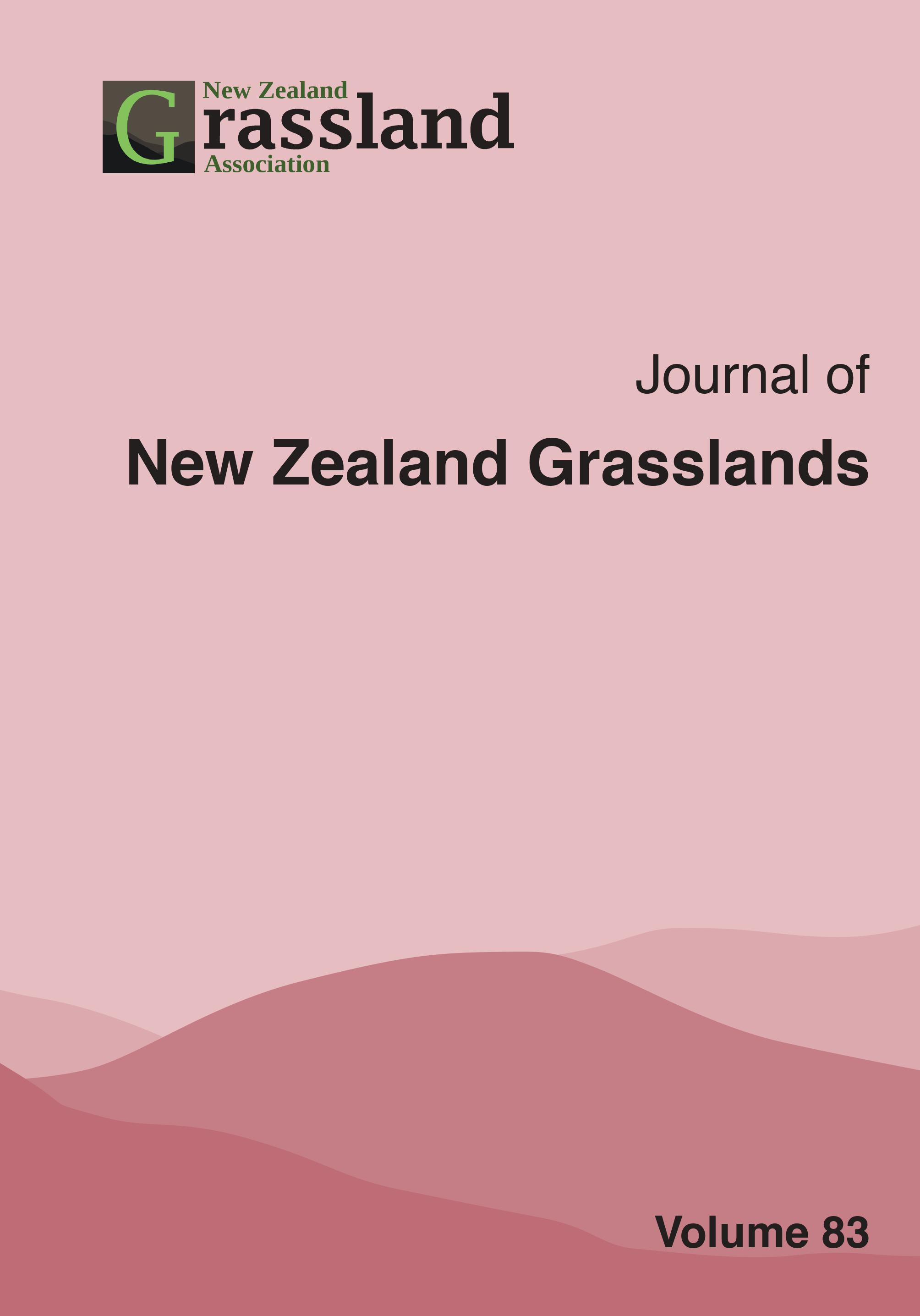Legumes are the key to increasing productivity at “Inverary”, a summer moist hill / high country farm in mid-Canterbury
DOI:
https://doi.org/10.33584/jnzg.2021.83.3516Abstract
About half the 4250 ha of Inverary is undeveloped
mountain land above 750 m a.s.l. There are 300 ha
of river flats, where lucerne and winter feed crops
are grown, and 300 ha conventional grass/clover
pastures. Limited areas of clover/plantain and winter
feed crops have been established at ~700 m a.s.l. on
easy rolling country. The 1600 ha of steep country,
dominated by browntop, gives low spring and high
summer production that is difficult to manage. In
2009, there were no lucerne or legume rich pastures.
The legume emphasis increased animal productivity
through improved lambing and lamb weight sold per
ewe. Total lamb meat production lifted from 230,113
kg in 2009 to 245,039 kg in 2020, despite 1000 fewer
ewes. The current sheep to cattle ratio is 60:40 with
13,000 stock units being wintered. Pre-development,
a major shortage of nutritious forage in early spring
was compounded by difficulty controlling reproductive
grass in summer and autumn. In 2016, total production
of legume dominant pastures was 40% more than sown
grass/clover pastures with limited nitrogen fertiliser
(15 vs. 11 t DM/ha/year). In early spring, legumes
had higher growth rates of conventional grass/clover
pastures (90 vs. 44 kg DM/ha/day), whereas browntop
dominant hill pastures grew 10 kg DM/ha/d and 5 t
DM/ha/yr.
Downloads
Downloads
Published
How to Cite
License

This work is licensed under a Creative Commons Attribution-ShareAlike 4.0 International License.
Copyright
This work is licensed under a Creative Commons Attribution-Non Commercial-NoDerivatives 4.0 International License. Rights granted to the New Zealand Grassland Association through this agreement are non-exclusive. You are free to publish the work(s) elsewhere and no ownership is assumed by the NZGA when storing or curating an electronic version of the work(s). The author(s) will receive no monetary return from the Association for the use of material contained in the manuscript. If I am one of several co-authors, I hereby confirm that I am authorized by my co-authors to grant this Licence as their agent on their behalf. For the avoidance of doubt, this includes the rights to supply the article in electronic and online forms and systems.




